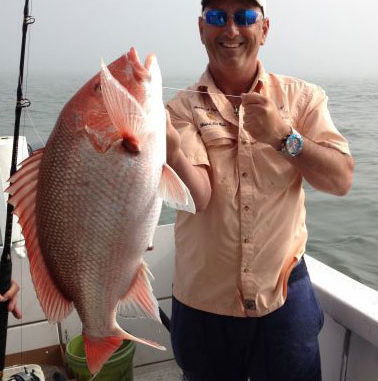
Potential increase in recreational harvest percentage to be determined; public comment scheduled for Wednesday afternoon at Hilton Riverside in New Orleans
A final vote is expected Thursday at the Gulf of Mexico Fishery Management Council’s meeting in New Orleans on the fate of Reef Fishery Management Plan Amendment 28, which could modify how the red snapper quota is divided between the recreational and commercial sectors.
The Council’s current preferred alternative is Alternative 8, which is derived from the recalibration of data from the early Marine Recreational Fish Survey and Statistics (MRFSS) to the Marine Recreational Information Program (MRIP.)
Currently, the annual catch limit is divided with 51 percent going to the commercial sector and 49 percent going to recreational anglers.
According to Myron Fischer, the director of the Fisheries Research Lab on Grand Isle and the Louisiana Department of Wildlife and Fisheries representative on the Council, the percentages would essentially flip under Alternative 8.
“The percentages would more or less switch under the preferred alternative,” Fischer said. “An MRIP recalibration workshop in December deemed that the recreational sector should have had a couple percent allocated to it through history — not just in 2014.
“The preferred alternative is not meant to be a solution to the recreational harvest, but rather a correction to the antiquated federal data and analysis system. It’s not a lot of fish when you divide it out, but it makes an adjustment that scientifically it was found should have been made originally.”
Under that plan, the annual catch would be divided slightly more in favor of the recreational sector over a three-year period, with 51.6 percent going to recreationals and 48.4 percent going to the commercial sector by 2017.
The other main option being considered is Alternative 9, which would increase the recreational anglers’ take even more due to size selectivity.
“It means the recreationals are catching bigger fish than originally thought,” Fischer said. “People tend not to plan a trip with their buddies and say, ‘Let’s go see how small a fish we can catch this weekend.’ They usually say, ‘Let’s see how big a fish we can catch.’
“Because the individual fish are larger than predicted, the recreational anglers are catching fewer numbers under their quota.”
Under Alternative 9, recreational anglers’ percentage of the catch would increase to 57.6 percent by 2017, with the commercial sector receiving 42.4 percent.
Randy Pausina, head of fisheries for LDWF, encouraged recreational anglers to come to the public comment portion of the meeting and voice their opinion Wednesday from 1 to 5:30 p.m. in the Jefferson Ballroom of the Hilton Riverside.
“Public comment is huge. It can sway votes,” Pausina said. “And it’s important when it’s in your home state to show up and voice your opinion.
“The reallocation issue is a pretty big vote, and it’s good for the private (recreational anglers) and we encourage them to come out.”


